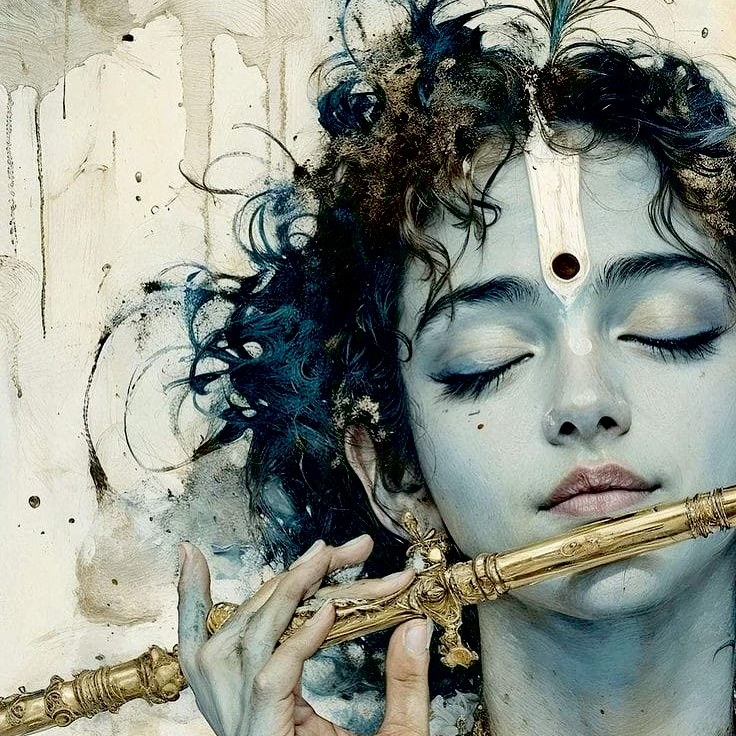- Home
- Chat
- Library
- Kirtan
- Quiz
- calendar
- marketplace
- Japa Dashboard
- Sadhana
- Quotes
- More
- Daily darshan

Moksada Ekadasi
Days
Hours
Minutes
Seconds

Blissful update coming soon...🌺

Create account to access full features:
No Notifications.
GITA (EN)
Vaishnava Songs
On the Way to Krsna
The Nectar of Devotion
Teachings of Lord Chaitanya
Brahma Samhita
The Journey of Self Discovery
Teachings of Queen Kunti
Teachings of Lord Kapila
Sri Isopanisad
A second chance
Science of Self Realization
Life Comes from Life
Transcendental Teachings of Prahlada Maharaja
The Path of Perfection
The Nectar of Instruction
Raja Vidya The King of Knowledge
Perfect Questions Perfect Answers
Krishna The Reservoir of Pleasure
Hare Kṛṣṇa Challenge Exposing a misdirected civilization
Easy Journey to Other Planets
Civilization and Transcendence
Beyond Birth and Death
Krsna_Consciousness_The_Matchless_Gift
KRSNA Consciousness The Topmost Yoga System
Elevation to Krsna Consciousness
Perfection of yoga
On the Way to Krsna
Transcendental Teachings of Prahlada Maharaja
The Path of Perfection
The Nectar of Instruction
Raja Vidya The King of Knowledge
Perfect Questions Perfect Answers
Krishna The Reservoir of Pleasure
Hare Kṛṣṇa Challenge Exposing a misdirected civilization
Easy Journey to Other Planets
Civilization and Transcendence
Beyond Birth and Death
KRSNA Consciousness The Topmost Yoga System
Elevation to Krsna Consciousness
Perfection of yoga
The Journey of Self Discovery
Teachings of Queen Kunti
Teachings of Lord Kapila
Sri Isopanisad
A second chance
Science of Self Realization
Life Comes from Life
GITA (EN)
The Nectar of Devotion
Teachings of Lord Chaitanya
Brahma Samhita
जन्म और मृत्यु से परे
GITA (HI)
SB FULL HINDI
उपदेशामृत
Sri Krishna Book (Hindi)
कृष्ण की ओर
श्री भक्तिरसामृत सिन्धु
श्री ईशोपनिषद्
हरे कृष्ण चुनौती
भगवान्श्री चैतन्य महाप्रभु उनका जीवन तथा शिक्षमृत
प्रह्लाद महाराज के दिव्य उपदेश
आत्म साक्षात्कार का विज्ञान
पूर्ण प्रश्न पूर्ण उत्तर
योग की पूर्णता
प्रकृति के नियम
जीवन का स्रोत जीवन
कृष्णभावनामृत सर्वोत्तम योग पद्धति
आत्मा का प्रवास
कृष्णभावनामृत की प्राप्ति
अन्य ग्रहों की सुगम यात्रा
महारानी कुन्ती की शिक्षाएँ
जन्म और मृत्यु से परे
उपदेशामृत
कृष्ण की ओर
हरे कृष्ण चुनौती
प्रह्लाद महाराज के दिव्य उपदेश
पूर्ण प्रश्न पूर्ण उत्तर
योग की पूर्णता
कृष्णभावनामृत सर्वोत्तम योग पद्धति
कृष्णभावनामृत की प्राप्ति
अन्य ग्रहों की सुगम यात्रा
Sri Krishna Book (Hindi)
श्री ईशोपनिषद्
आत्म साक्षात्कार का विज्ञान
जीवन का स्रोत जीवन
महारानी कुन्ती की शिक्षाएँ
GITA (HI)
श्री भक्तिरसामृत सिन्धु
भगवान्श्री चैतन्य महाप्रभु उनका जीवन तथा शिक्षमृत
Hare Krishna Classic
Samsara Davanala
Govinda Jaya Jaya
Govindam Adipurusham
Jaya Radha Madhava
Hare Krishna Kirtan
Vrindavan Pyaaro
Jaya Radha Madhav
Radha Rani Mashup
Adharam Madhuram
Kanhaiya Kanhaiya
Radha Radha Naam
Ram Ka Gungan Kariye
O Palanhare


Time's up
Quiz Info
- You are eligible to play quiz
- Questions will be from Bhagwad Gita
- Questions will be asked once in a week
December 2025
Create account to access this features:
0
Today's Round
0
Lifetime Round
0
Time (min.)
0
Rank
Top 10

Pramod Wagh • 172 rounds

Ram Joshi • 158 rounds
Manasa • 40 rounds
Natasha • 34 rounds

Anil Jangid • 26 rounds
Das • 14 rounds
Pawan • 11 rounds
Shravani • 11 rounds
Annapurna • 10 rounds
Rajkumar • 7 rounds
Login to see monthly rankings
Login to see lifetime rankings
Create account to access this feature:
- History
- Add Sadhana
- Customize
Please log in to view your sadhana history.
Please log in to submit sadhana data.
Please log in to customize your sadhana card.
Loading quotes...
Bhakti Tools
More Spiritual Apps
Create account to access full features:
Hare Krishna Kirtan
ISKCON Mayapur
1 / 1













